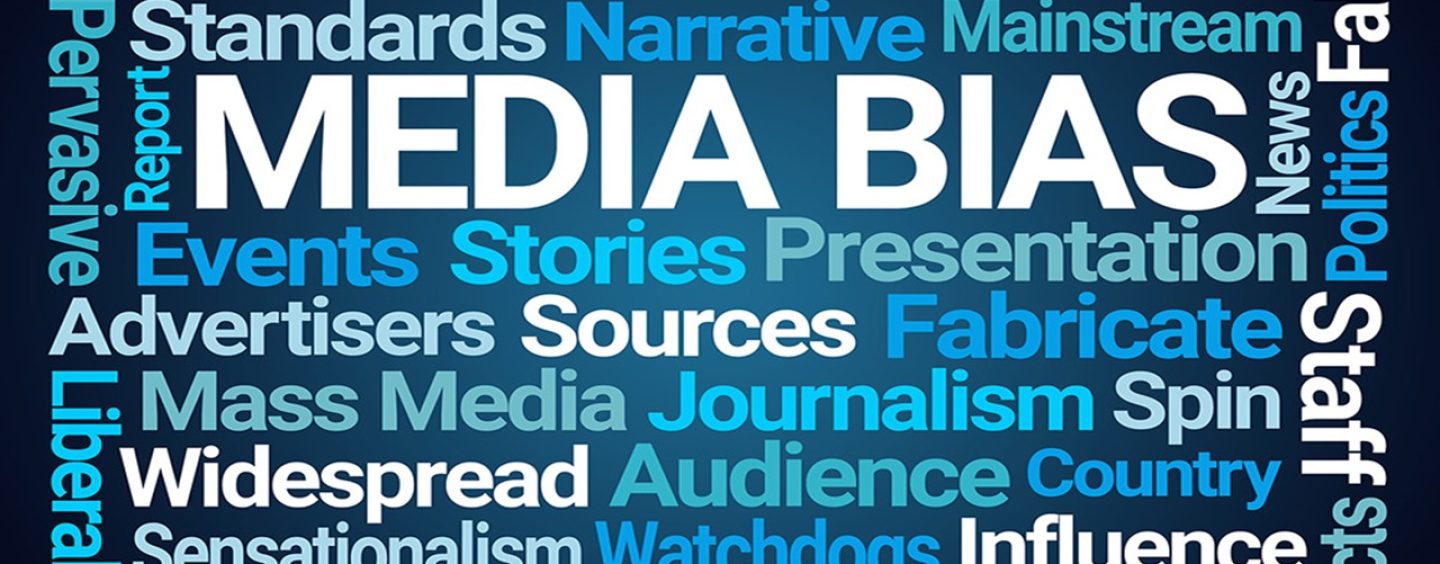
Why Don’t Americas Require More From The Media Than Just Bias Reporting? (Video)
by Tj Sotomayor November 15, 2024 0 commentsWhat You Think?
By: Tommy “Tj” Sotomayor
Bias means supporting or opposing something or someone in an unfair way, regardless of the evidence. Media bias is when information spread by media or a news outlet reflects the interests and biases of ownership or individuals of that media company. Corporations may have a clear bias for one political party or issue and may influence its media outlets to reflect that bias. Individual journalists or news outlets may favour one side of an issue and reflect that bias — consciously or unconsciously — in the way they cover stories. The fact that a majority of journalists in Canada are White can also lead to biased reporting on minority groups. People can overcome unconscious bias by thinking and talking about it, and especially by listening to people from less privileged backgrounds. (© Robwilson39/Dreamstime)
(© Robwilson39/Dreamstime)
Different Forms of Bias
Bias means supporting or opposing something or someone in an unfair way, regardless of the evidence. Journalists are trained to detect bias and avoid letting it creep into their stories. But there are several ways it can still influence the news they produce.
Bias by Selection or Omission
When journalists cover news events, they select or omit information as they decide what is most relevant. For example, if some people in a large crowd boo a politician, journalists can decide to characterize it as the entire audience booing her, some opponents “expressing disapproval,” or to not mention the boos at all.
Bias Through Placement
Journalists also decide how to “lead” a story — which information they should highlight first, and how they should present it. They often use an “inverted pyramid” structure to tell the story. In an inverted pyramid style, the reporter starts with a narrow focus on what she decides is the most important piece of information. She then pulls back to include more details and give a broader view of the topic.
Journalists also decide which story leads the broadcast news, and which stories go on the front page of a newspaper or the landing page of a website. Readers tend to assume these are the most important stories of the day, even if that is not stated.https://www.youtube.com/embed/WVSqVOuWEMg
Bias by Headline
With the increase in people getting news from social media, the headline has taken on an even greater role. In fact, it may be all some people read. Headlines can suggest the news is good or bad, exciting or scary, in a way the story might not do.
The drive to get people to share stories on social media has led to the rise of clickbait. Clickbait is when websites write dramatic and emotional headlines designed to pull in readers. The content of the article, however, doesn’t deliver what the headline promises. They often follow patterns like: “Man tries to hug a lion — you won’t believe what happens next,” or “This 1980s child star is all grown up — you’ll be shocked at how she looks!” or “Only people with an IQ above 160 can solve this quiz. Can you?” Clicking the link often takes people to a site filled with advertising, and only a few more details on the story itself.
https://googleads.g.doubleclick.net/pagead/ads?client=ca-pub-3964766461879185&output=html&h=60&slotname=1946780682&adk=1342868485&adf=3579836576&pi=t.ma~as.1946780682&w=468&abgtt=9&lmt=1731712815&format=468×60&url=https%3A%2F%2Fwww.thecanadianencyclopedia.ca%2Fen%2Farticle%2Fmedia-bias-in-canada&wgl=1&uach=WyJXaW5kb3dzIiwiMTUuMC4wIiwieDg2IiwiIiwiMTMwLjAuNjcyMy4xMTciLG51bGwsMCxudWxsLCI2NCIsW1siQ2hyb21pdW0iLCIxMzAuMC42NzIzLjExNyJdLFsiR29vZ2xlIENocm9tZSIsIjEzMC4wLjY3MjMuMTE3Il0sWyJOb3Q_QV9CcmFuZCIsIjk5LjAuMC4wIl1dLDBd&dt=1731712815515&bpp=5&bdt=1194&idt=385&shv=r20241112&mjsv=m202411120101&ptt=9&saldr=aa&abxe=1&cookie_enabled=1&eoidce=1&prev_fmts=0x0&nras=1&correlator=7087462133212&frm=20&pv=1&u_tz=-300&u_his=1&u_h=1080&u_w=1920&u_ah=1032&u_aw=1920&u_cd=24&u_sd=1&dmc=8&adx=700&ady=3301&biw=1617&bih=775&scr_x=0&scr_y=252&eid=31088728%2C31088897%2C95344188%2C95344787%2C95335245%2C95345966&oid=2&pvsid=2842670688933260&tmod=1126865951&uas=0&nvt=1&ref=https%3A%2F%2Fwww.google.com%2F&fc=896&brdim=1901%2C85%2C1901%2C85%2C1920%2C0%2C1650%2C887%2C1634%2C792&vis=1&rsz=o%7C%7CoeEbr%7C&abl=CS&pfx=0&fu=1024&bc=31&bz=1.01&td=1&tdf=2&psd=W251bGwsbnVsbCxudWxsLDNd&nt=1&ifi=1&uci=a!1&btvi=1&fsb=1&dtd=465
Bias by Word Choice and Tone
Subtle use of language can influence how readers interpret the news. If a reporter writes that someone “claimed” something, it puts doubts in the reader’s mind in a way that saying someone “said” something would not. In a story on a middle-aged man who stole a car as a teenager, reporters could call that person a convicted thief, a reformed man, or a person who did their time. Each word choice guides the reader toward a different conclusion about the man’s character.
When Ontario premier Doug Ford marched in the York Pride Parade in 2019, the Toronto Sun headlined the story, “Ford proudly marches with cops in York Pride parade.” The newspaper reported that “dozens of police in uniform” marched and then noted that Ford had made an “unexpected appearance.” In the fifth paragraph, it reports that Ford won’t march in Toronto Pride, “which has banned police in uniform from marching for the third year in a row.”
By using words like “proudly” and drawing attention to Ford marching with police officers, the Sun story creates a favourable impression of the premier. It also creates an unfavourable impression of Toronto Pride by noting its exclusion of police “for the third year in a row.”https://www.youtube.com/embed/Z7ZmSxmhohs
Global News reported the same story under the headline “Premier Ford marches in York Region Pride parade.” Its first paragraph said, “Premier Doug Ford took part in the York Region Pride parade in Newmarket on Saturday afternoon, amid mounting criticism for stating he wouldn’t participate in the upcoming Toronto Pride parade.”
By leading with “mounting criticism” over the Toronto parade and not mentioning the police officers until much further down in the story, Global News creates an initially unfavourable impression of Ford.
Meanwhile, the Toronto Star’s headline said Ford’s appearance took organizers “by surprise.” In the second paragraph, it quotes organizers saying, “[We were] not aware Mr. Ford was attending or marching.” This creates the impression that they may not have approved of his participation.
When Justin Trudeau’s Liberal Party won Canada’s 2015 federal election, the Toronto Star lead read: “Prime Minister Justin Trudeau. That title, which seemed improbable a mere 11 weeks ago, is now set to become a reality after the Liberals’ historic, come-from-behind election result.” The National Post lead read: “The Liberal Party steamrolled to a stunning political comeback Monday night, forming a new, majority government and creating Canada’s first family dynasty.”
Both leads focus on the comeback angle. However, the Star called it “historic,” which creates a positive impression. The Post instead called it a “family dynasty,” alluding to his father, former prime minister Pierre Trudeau. This could create the impression that his father’s legacy had an important role in Justin Trudeau’s victory.https://www.youtube.com/embed/8c0HWFg9dpw
Bias by Image
Photo editors pick an image to go with a story. They can choose one that makes the person look dignified, or angry, which influences how people read the story. Some stories about US president Donald Trump facing an impeachment inquiry ran photos of Trump yelling with his mouth wide open. Others selected photos of him looking stoic. The first image suggests he responded with anger and little self-control. The other suggests he reacted calmly.
Political parties can also use, or even alter, photos in a way to spread a certain message. In 2019, federal Green Party leader Elizabeth May’s team published a photo of her campaigning. May held a reusable coffee cup with the Green Party logo and drank from a metal straw. However, she later admitted the metal straw and reusable cup were added to the photo digitally. The changes better fit her image of an environmentally conscious politician.
Unpacking Privilege
Privilege refers to rights or advantage that are granted only to a particular group of people. It can also refer more generally to advantages that come from being part of a dominant group in society. Becoming aware of these advantages and their impact on others allows a privileged person to more clearly see the disadvantages that can come from being outside the dominant group.
Privilege can lead to unconscious bias. This means the person holds attitudes or ideas about another group but might only see those beliefs as facts. People can have unconscious biases based on age, gender, culture, language, ethnicity — basically any marker that might divide someone into a different group. When privileged members of society hold unconscious biases against members of a minority or underprivileged group, that can create systemic barriers for the underprivileged group.https://www.youtube.com/embed/rZxMjmcT0cY
Bias in Canadian Journalism
People, including journalists, can also be politically biased against certain views. For decades, many newspapers openly leaned left or right (e.g., the left-leaning Globe and the right-leaning Empire newspapers). Today, people are more likely to find openly biased reporting on left-leaning websites such as HuffPost or Salon, or the right-leaning Drudge Report or Rebel News. Some studies have found that the CBC has a left-centre bias. However, that tends to be largely offset by factual reporting that includes multiple perspectives.
In Canadian journalism, the fact that a majority of journalists are White can lead to biased reporting on minority groups. People can overcome unconscious bias by thinking and talking about it, and especially by listening to people from less privileged backgrounds. People consuming the news can pay extra attention to how certain groups are typically represented by the media and by noticing who is under-represented or misrepresented.
Media Ownership and Convergence
In privately owned media, the interests and biases of the ownership can create bias in the news outlet. Corporations often own different kinds of media (e.g., news websites, radio stations, television networks). That can narrow the range of opinion in the public forum. A dramatic example of this in the United States came in March 2018. Dozens of news anchors from multiple television stations across the country all recited the same speech warning against the dangers of “biased and false news.” Local FOX, ABC and CBS outlets delivered a seemingly independent editorial message about the “troubling trend of irresponsible, one-sided news stories plaguing our country.”
All the stations in question were owned by the Sinclair Broadcast Group. It has close ties to President Donald Trump. The little-known company owns 191 television stations, which all run under different names. Most viewers would have no idea their local anchor was reading a script reflecting a corporation’s right-wing perspective. Trump himself has tweeted that Sinclair is “far superior” to CNN or NBC.https://www.youtube.com/embed/RL-CHyzgK1Q
Media Ownership in Canada
Canada has not seen that level of widespread media ownership. However, it does have big corporations that own multiple news outlets. (See also Media Convergence.)
The Torstar Corporation owns the Toronto Star and operates more than 80 newspapers across Canada, including the StarMetro chain of free daily newspapers. The Postmedia Network Canada Corporation owns the National Post newspaper. It also owns daily newspapers in Alberta, British Columbia, Manitoba, Ontario, Quebec and Saskatchewan. The corporation, which owns 140 outlets in print and online, is 98-per-cent owned by US hedge funds.
In Atlantic Canada, the Irving Group is well-known for its gas stations and home oil delivery. In New Brunswick, through Brunswick News, it owns every major daily newspaper, most of the French and English weeklies, and some private radio stations. In 2019, Brunswick News fired its award-winning political cartoonist Michael de Adder — a move he said came in response to an unflattering cartoon he drew about Donald Trump. Using the Twitter account of one of its newspapers, Brunswick News called that “false information” and said that cancelling de Adder’s contract was not related to the Trump cartoon.
It is unlikely that bias can be completely removed from media-owning corporations or individual journalists. But a public that is media literate can better detect and object to those biases. Journalists who are aware of their own biases and issues around privilege can monitor their own reporting to ensure it relies on facts and balances multiple sides of issues.







No Comments so far
Jump into a conversationNo Comments Yet!
You can be the one to start a conversation.Only registered users can comment.